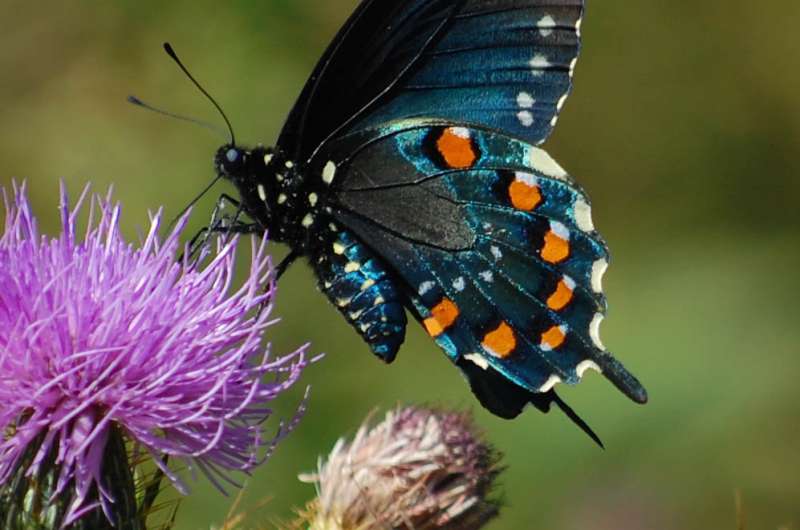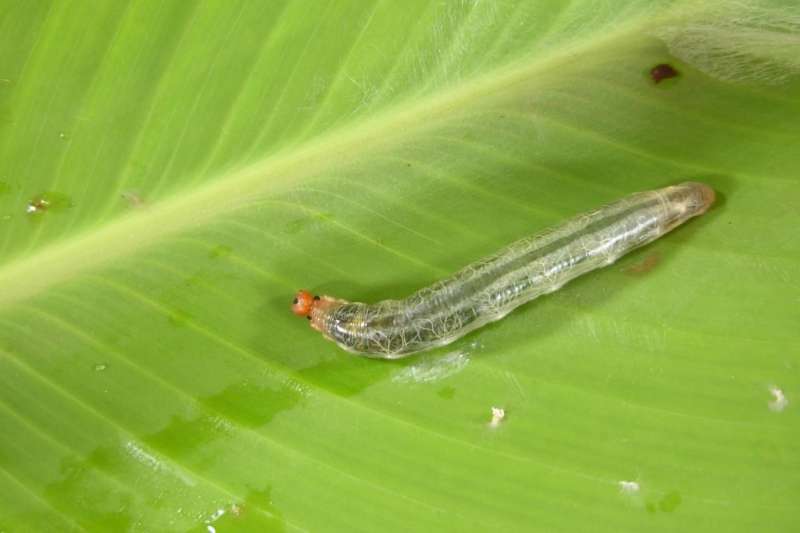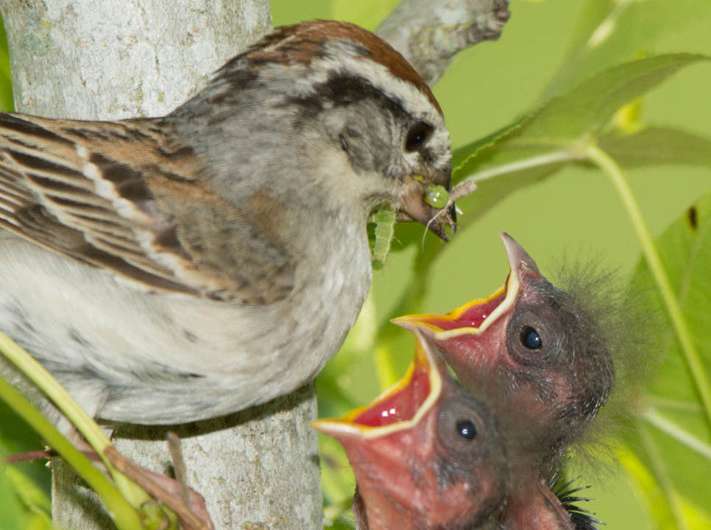Insects coping with climate change

As the seasons move through their annual procession, they are accompanied by the presence of a spectacular diversity of insects. Bees, butterflies, moths – you name it, if you look closely you'll see them.
Connecticut is home to more than 10,000 species of insects, says ecology and evolutionary biology professor David Wagner, and the number is climbing each year – due to climate change.
Winners and Losers Among Insect Populations
Since his arrival in Connecticut in the late 1980s, after finishing his degree out West, Wagner has been studying the insects around the state, starting in his own backyard.
"I started keeping a list right after I arrived," he says. "I was able to record around 1,200 different butterflies and moths within a mile of my first house here in Connecticut."
Wagner says that with climate change, as with any other environmental change, there will be winners and there will be losers.
He says we can expect to see around 10 new butterfly and moth species per year in the state. Some notable additions include the pipevine swallowtail and the giant swallowtail.
The beauty of the pipevine swallowtail rivals that of many tropical butterflies, the hindwings are electric metallic blue-green with orange crescents. "If you want to attract them, just plant some pipevine," says Wagner. "If you plant it, they will come."

The increase in insect biodiversity is a rare bit of good news amid the multitudinous downsides of climate change.
"The climate change we are seeing now is especially challenging for biodiversity because of the rate of change," he says. "Current upheavals in the world's climate will have grave consequences for many species, with global extinction likely to befall thousands of plants and animals."
Connecticut has already lost some species that are adapted to colder climates. Rather than dying out, they still maintain colonies in the Berkshires and northward. Others on the decline include those found in bogs, and other species that are reliant on cooler conditions for survival.
Beyond the arrival of new species, the butterflies and moths found in Connecticut are also squeezing in extra generations per season. Wagner has found that spring-active bees are on the wing around 10-11 days earlier over the last few decades. Coupled with the delay of hard freezes in the fall, it means the breeding season for many insects – as well as other wildlife – is being extended by weeks.
Wagner cautions that not all of the new arthropod arrivals are beautiful or even pleasant. New species of pathogen-carrying mosquitoes and ticks are either already here, or making strides closer to our area each year. The pernicious Lone Star tick joined our ranks just recently – it vectors Ehrlichiosis and a number of other tick-borne diseases. Chiggers, another unwelcome new pest, have also appeared. These small arachnids bore into the skin of their host, creating annoyingly persistent, itchy red bumps. Previously, they were unable to survive Connecticut's harsher winters.
These changes, happening at such a rapid pace, will affect the state's wildlife as we know it, says Wagner.
Native Plants Support the Local Food Chain
For those hoping to support local insect species, Wagner says the place to start is at the bottom of the food chain, by ensuring that there is a wide variety of native plants available as food for insects and other wildlife.

He points out an important but often overlooked concept, that ornamental and exotic plants rarely support the local food chain like native plants do. Native insects and native plants evolved together, and over time, developed intimate associations and adaptations for one another.
Planting exotic species limits the potential of yards and parks to support wildlife. And non-native plants become doubly problematic if they are invasive. Many forests in the Northeast are becoming dense thickets of Oriental bittersweet, multiflora rose, Japanese barberry, and winged burning bush, plants that are able to thrive in part because many native animals cannot or will not eat them.
"Invasive plants usually don't have close associations with native species," Wagner says. "Among the biggest losers are herbivorous insects that are dietary specialists – their fates are inextricably bound to those of their host plants. As native plants are overrun by barberry and bittersweet, so will go Connecticut's specialized bees, butterflies, and other natives. In habitats overrun with invasive plants, we often get more 'weedy' species higher up the food chain: robins, starlings, English house sparrows, while losing the buntings, warblers, and more specialized birds.
A smorgasbord of plants will support a healthy mix of insects that in turn will support a healthy mix of songbirds and other animals all the way up the food chain. To make a songbird, you have to have caterpillars – to raise a clutch of nestlings, a mother bird will need hundreds. Plant exotic ornamentals that don't attract local insects and you might as well hang a sign that reads, "Songbirds not welcome."
"We need to be more mindful about the decisions we make, one tree at a time, one yard at a time, one campus at a time," says Wagner. "We need to plant things that will support local biodiversity."
Wagner encourages homeowners to explore their own backyard biodiversity, as he did when he first moved to Connecticut, by going out into the yard by day, by night, exploring by flashlight, or simply by shining a light on a sheet to attract insects, and of course take pictures or make notes on what is observed.
"There's so much going on in one's backyard in Connecticut," says Wagner. "It's a mini-jungle of sorts, rife with creatures."
Let's keep it that way. Instead of a gingko, plant a white oak, native cherry, or highbush blueberry.
Provided by University of Connecticut



















